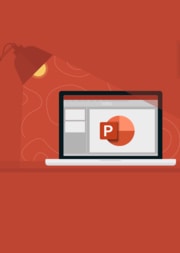Nervous Before an Exam? Here’s How to Feel More Confident
It is normal to feel nervous before you go for an exam. Exams are important and they weigh heavily on your final grades. Success in life is often directly related to how you learn to handle pressure in a healthy way. It can help you stay focused, improve productivity and enable you to do your best at whatever you set your mind to.
Experiencing anxiety or stress before an exam is completely normal. However, if it is excessive it can interfere with the performance of any student no matter how much they have studied and prepared. It has also been referred to as test anxiety. So what should you do if you feel nervous before taking exams? Here are some tips to feeling more confident before a test.
1. Take a break from the books
There is such a thing as over-studying. If you spend too much time studying without a break, it will exhaust your mind and bring about fatigue. Fatigue can lead to a loss of concentration and it affects your memory as well. If your memory gets affected it will lead to frustration as you begin to think you haven’t learned anything at all. When you begin to notice this, realize that stress and anxiety has settled in, causing you to become even more nervous about failing your exam. It’s a sign that it’s time to walk away from the books for a while.
2. Breathing
Stress can result in nervousness and anxiety and it will affect your breathing pattern as well. Test nerves can also lead to this. Concentrate on slow breathing to help manage your nerves and calm your body. It can also prevent panic attacks for those who struggle with them. Wait for a moment and take a deep breath. Shut your eyes and take ten deep breaths. For this situation, having a fidget ring could prove the most useful. Due to the tactile experience of manipulating the ring in one’s hands during stressful times, this type of physical stimulation can help calm the body and mind during anxious moments such as when taking exams. Using fidget rings before exams may prove an ideal way for individuals to take back control in these high-stakes situations. Simple exercises like these only take a minute but can make a world of difference in calming your mind.
3. Get light exercise
There is a strong link between a sense of well being and regular exercise. Exercise leads to reduced anxiety and also helps with handling stress. Even while studying, going for a walk or a bike ride can work wonders for your brain and body. Exercise is also responsible for releasing those feel-good endorphins. It takes your mind off nervousness you may feel about upcoming exams. Clinical studies have indicated that regular exercise results in several emotional and psychological advantages that can aid you in gaining more confidence overall. Additional ideas for exercise are jogging, swimming and dancing.
4. Add fuel to the brain
Many times students get caught up in preparation for exams and as a result, they forget about taking care of their bodies. All physiques need food for optimum operation. Even your brain needs energy to work at full capacity. Nervousness and anxiety can often stem from a lack of proper diet. Drinking sufficient amounts of water is also important to avoid nervousness and anxiety, along with consuming a well-balanced diet of food that is rich in antioxidants. A light snack and drinking a glass of water while studying can help ease tension.
5. Prepare yourself well
To assist you with your regular studying can also search for online practice tests or study guides to help prepare yourself on the day of an exam. Online resources can also help you organize your course work and study notes. It doesn’t matter what level you are at or how old you are, even medical students can get nervous about taking their USMLE step 1 and they need to prepare well before entering the test. Although it might sound obvious, if you are confident about your preparation, you will feel better when walking into any test. This results in less anxiety which in turn can help you maintain focus.
6. Sleep
When there is a lot of information floating around in your head it becomes tough to make sense out of it. Sometimes while studying you may just need to take a break and simply close your eyes. A power nap or even a longer sleep refreshes the brain. This is why it’s always better for you to spread your studying out over more than one day and not cram it all in at the last minute. Developing good sleep habits on a daily basis is important so that you’re not playing catch up, especially before an exam. Similar to energy from food your body and brain needs recharging. A sufficient amount of sleep every night is important. Lack of sleep can lead to much negativity such as lower affability, memory issues, depression, and anxiety.
7. Music
Research has shown that listening to music can reduce anxiety and blood pressure and even improve sleep quality, mental alertness and memory. Other studies have also shown that it is not just one particular type of music, but music that the listener enjoys. Therefore, it’s the enjoyment of the music that counts to open up your brain and reduce your stress level. It probably not a good idea to listen to music constantly while studying, but it can be a healthy way to do it in moderation and definitely a good thing to do give your mind a break. I can also calm your nerves just before taking a test.
Resources for Teachers and Parents
- Read how teachers can recognize the signs of stress in students.
- Learn the 4 reasons why students struggle with math.









